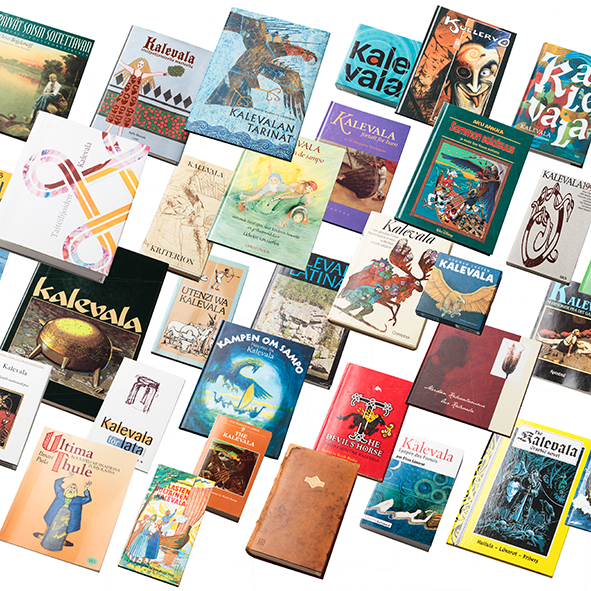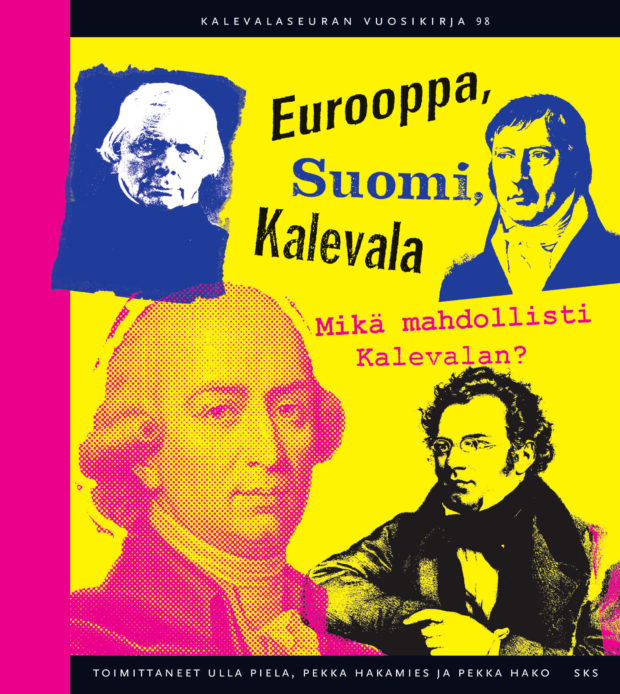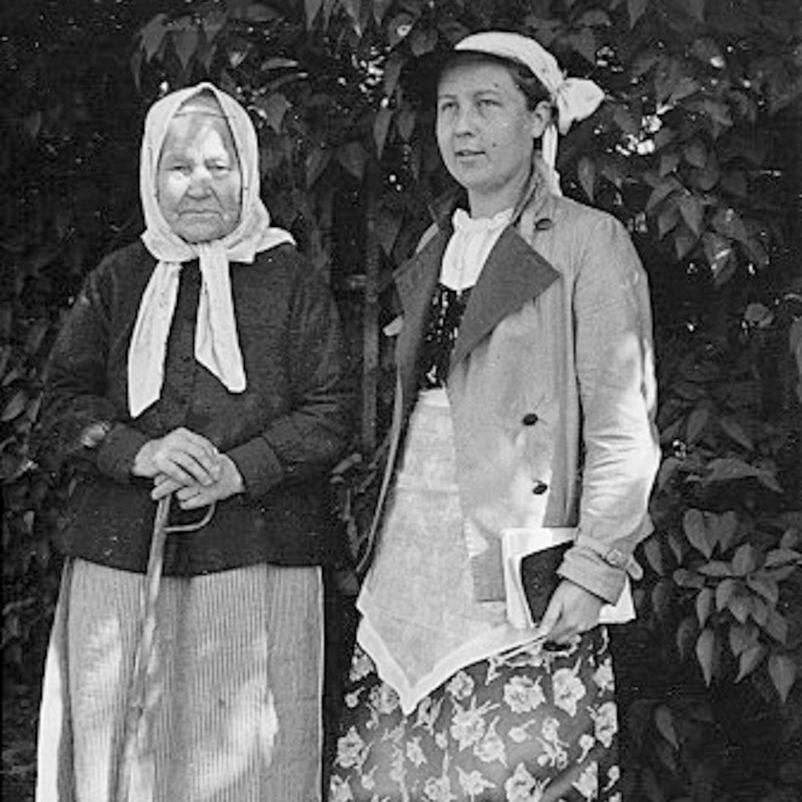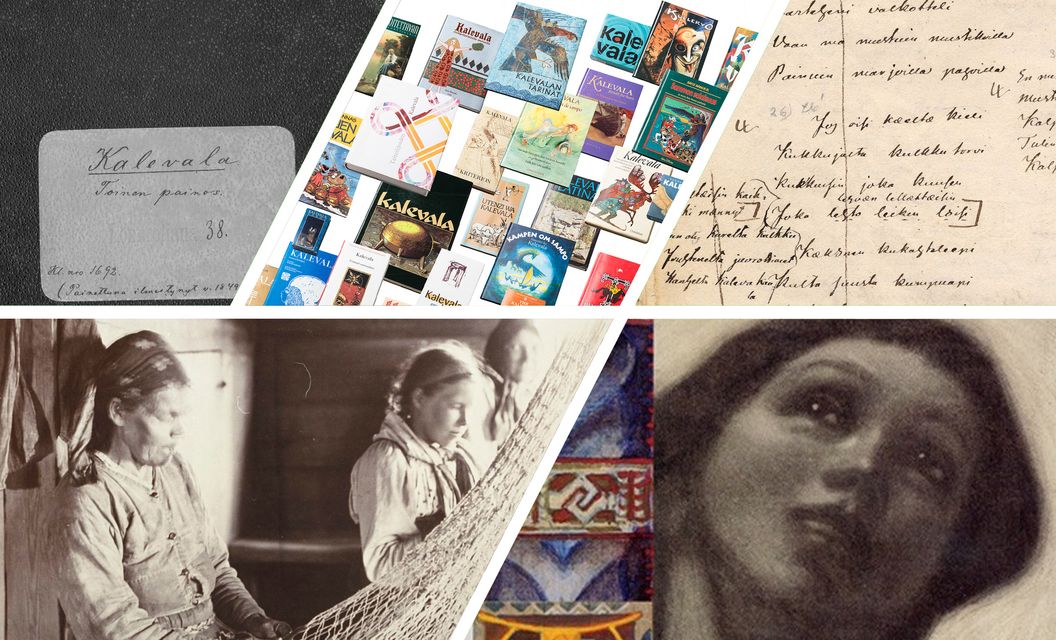The Multifaceted Kalevala
The diversity of the Kalevala is easier to understand if the epic work is seen at the crossroads of oral and written culture.
Elias Lönnrot tried to follow in the footsteps of the runo singers, but carrying out his creative work in writing allowed him to stretch the way the poems were presented, to add repetition and new episodes and characters.
The Kalevala is a hybrid of many things. The epic is at the same time mythical and adapted and interpreted by Lönnrot, it is based on folk poems and referring to literature, it is a reflection of both the pre-modern world and the bourgeois society.
The Many Kalevalas
When we refer to the Kalevala, we usually mean the 1849 version of the book. However, from 1833 on Elias Lönnrot processed six versions of the Kalevala, varying in length and contents. The 1835 version is known as ”the Old Kalevala”, whereas the the 1849 one is ”the New Kalevala”. The Abridged Kalevala was made for schools in 1862.
While these versions of the Kalevala may be studied as the evolution of the Kalevala as we know it, the collected runo source material is so abundant that according to Lönnrot himself, at least seven different Kalevalas could be compiled from them.
The Kalevala also refers to many worlds (e.g. mythical, pre-modern, bourgeois, romantic world) and there have been countless artistic interpretations of the epic since its publication. The Kalevala has been and continues to be reinterpreted again and again in various adaptations of art and popular culture. It is also used in the gaming world, in tourism and in advertisements. In this sense, the Kalevala is not just one work, or only Lönnrot’s interpretation of folk poems, but many epic versions, numerous interpretations and artistic adaptations.
There is no one way to interpret or approach the Kalevala.
Image: Gary Wornell, SKS.


The Kalevala is Modern
The epic influenced the birth of the nation state and the establishment of the position of the Finnish language. It created perceptions of Finnishness, its history, language and literature.
The Kalevala took Finns to the world. The publication of the Old Kalevala in 1835 aroused admiration, but few understood its language. The Kalevala was translated into Swedish by M. A. Castrén in 1841, which gave access to it for the intellectuals both in the grand duchy of Finland and in Scandinavia. Further translations in French, Russian, and English soon took it further abroad. As of 2022, the Kalevala has been translated into at least 59 languages, if only the more extensive, published translations are taken into account.
Not only folk poems but also Elias Lönnrot’s own interpretations and the intellectual discussions of the era have given shape to the Kalevala. One of the important debates of the 19th century was related to the family and the position of women in society. Lönnrot participated in the discussion with enlightening stories that appeared in newspapers. More directly, Lönnrot reflects on the position of women in his diaries and private letters. The challenges of the pre-modern and bourgeois family ideal can also be read in the Kalevala, especially in the Aino and Kullervo runo cycles.
Image: The cover of Eurooppa, Suomi, Kalevala: Mikä mahdollisti Kalevalan? (Europe, Finland, Kalevala: what made the Kalevala possible?) The Kalevala Society’s Yearbook 98, 2019.
The Kalevala is Karelian and Finnish
The most important source poems of the Kalevala epic have been recorded in Karelia on the Russian side of the eastern border, especially in the White Sea Karelia (Vienan Karjala in Finnish). In addition to epic poems, the Kalevala also contains plenty of lyrical songs and wedding poems. Regarding these poems, Lönnrot also used material collected from Karelia on the Finnish side, when preparing the Kalevala.
The language of the Kalevala also refers to both the Karelian and Finnish languages and their different dialects. Elias Lönnrot modified the language of the poems and combined different Karelian and Finnish dialects, creating a kind of universal language for the Kalevala so that the whole nation would be able to read it.
Image: The runo singer and the scholar. Finna.fi

Perspectives to the Kalevala
Listen to how a folklorist, an activist, a literary scholar, a singer, and a theatre director see the Kalevala!
Go to the video collection

